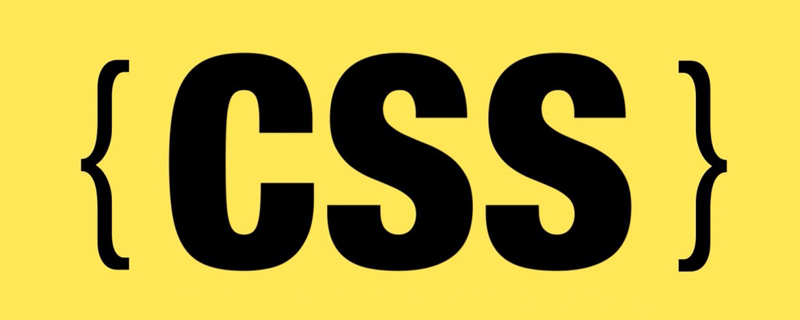 Web Front-end
Web Front-end CSS Tutorial
CSS Tutorial Automatic scrolling parallax effect without JavaScript_Experience exchange
Automatic scrolling parallax effect without JavaScript_Experience exchangeThis effect was modeled after Chris Coyier's parallax tutorial, and the starry sky background was used with Chris' permission.
Running effect:
Watch here: http://www.fofronline.com/experiments/parallax/#experiment
This effect can be previewed normally in Safari 4 Beta and Google Chrome. No JavaScript is required to achieve this effect.
(But it cannot be viewed in IE7 and below)

Implementation method:
HTML code of this page It's very simple. One div is used to define the background, and another div is used to define the content. The multiple background technology in CSS3 is used here, so additional tags are needed to represent other background images.

Set the CSS background container to a fixed position and let it occupy the bottom of the page through the top, left, bottom and right properties. The background image is specified through the background attribute, and the top-level background is specified first. Each image is positioned according to percentage, and their positions are different, so that when the size of the container changes, each image will move, thus producing a parallax effect

According to the usual thinking, it can only be done when the page is zoomed or controlled using JavaScript Produce animation effects. Another method is used here. By moving the left edge of the background image container (eg from 0px to 100px). This changes the overall width of the container, causing the background image to move differently depending on their percentage. By setting the duration and left position large enough, a continuous parallax movement effect will be produced.

You can increase the movement speed to get more interesting effects, and you can also add some mouse actions. The final CSS code is as follows:

Quick information: The parallax effect is originally an astronomical term. When we observe the starry sky, stars far away from us move slower, while stars closer to us move faster. When we sit in the car and look out the window, we also have this feeling. The mountains in the distance don't seem to be moving, but the rice fields nearby are passing by quickly. Parallax effects are used in many games to add a three-dimensional feel to a scene. (Translation/Cao Sijia)
 css ul标签怎么去掉圆点Apr 25, 2022 pm 05:55 PM
css ul标签怎么去掉圆点Apr 25, 2022 pm 05:55 PM在css中,可用list-style-type属性来去掉ul的圆点标记,语法为“ul{list-style-type:none}”;list-style-type属性可设置列表项标记的类型,当值为“none”可不定义标记,也可去除已有标记。
 css与xml的区别是什么Apr 24, 2022 am 11:21 AM
css与xml的区别是什么Apr 24, 2022 am 11:21 AM区别是:css是层叠样式表单,是将样式信息与网页内容分离的一种标记语言,主要用来设计网页的样式,还可以对网页各元素进行格式化;xml是可扩展标记语言,是一种数据存储语言,用于使用简单的标记描述数据,将文档分成许多部件并对这些部件加以标识。
 css3怎么实现鼠标隐藏效果Apr 27, 2022 pm 05:20 PM
css3怎么实现鼠标隐藏效果Apr 27, 2022 pm 05:20 PM在css中,可以利用cursor属性实现鼠标隐藏效果,该属性用于定义鼠标指针放在一个元素边界范围内时所用的光标形状,当属性值设置为none时,就可以实现鼠标隐藏效果,语法为“元素{cursor:none}”。
 css怎么实现英文小写转为大写Apr 25, 2022 pm 06:35 PM
css怎么实现英文小写转为大写Apr 25, 2022 pm 06:35 PM转换方法:1、给英文元素添加“text-transform: uppercase;”样式,可将所有的英文字母都变成大写;2、给英文元素添加“text-transform:capitalize;”样式,可将英文文本中每个单词的首字母变为大写。
 rtl在css是什么意思Apr 24, 2022 am 11:07 AM
rtl在css是什么意思Apr 24, 2022 am 11:07 AM在css中,rtl是“right-to-left”的缩写,是从右往左的意思,指的是内联内容从右往左依次排布,是direction属性的一个属性值;该属性规定了文本的方向和书写方向,语法为“元素{direction:rtl}”。
 css怎么设置i不是斜体Apr 20, 2022 am 10:36 AM
css怎么设置i不是斜体Apr 20, 2022 am 10:36 AM在css中,可以利用“font-style”属性设置i元素不是斜体样式,该属性用于指定文本的字体样式,当属性值设置为“normal”时,会显示元素的标准字体样式,语法为“i元素{font-style:normal}”。
 怎么设置rotate在css3的旋转中心点Apr 24, 2022 am 10:50 AM
怎么设置rotate在css3的旋转中心点Apr 24, 2022 am 10:50 AM在css3中,可以用“transform-origin”属性设置rotate的旋转中心点,该属性可更改转换元素的位置,第一个参数设置x轴的旋转位置,第二个参数设置y轴旋转位置,语法为“transform-origin:x轴位置 y轴位置”。


Hot AI Tools

Undresser.AI Undress
AI-powered app for creating realistic nude photos

AI Clothes Remover
Online AI tool for removing clothes from photos.

Undress AI Tool
Undress images for free

Clothoff.io
AI clothes remover

AI Hentai Generator
Generate AI Hentai for free.

Hot Article

Hot Tools

Zend Studio 13.0.1
Powerful PHP integrated development environment

Atom editor mac version download
The most popular open source editor

ZendStudio 13.5.1 Mac
Powerful PHP integrated development environment

SublimeText3 Mac version
God-level code editing software (SublimeText3)

Dreamweaver Mac version
Visual web development tools






